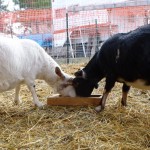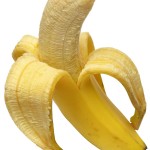by Catherine Haug, March 18. 2013
(photo, right, from Brenda Lee)
See also about Sheree’s Nigerian Dwarf Goats – Perfect for town lots.
This is the first in what I hope to be a series of articles on different breeds of goats raised in the Flathead.
Back in 2008, Gayle Prunhuber did a presentation on Keeping a Family Goat, at her home in Ferndale. Gayle keeps Toggenburgs, which are a “normal” size breed (30″ – 38″). Some of us were dismayed to learn how much land it takes to keep a couple goats: about 3/4 acre, penned. But that considers allowing them to browse, which is their natural feeding pattern.
Smaller breeds such as Nigerian Dwarf or Kinder Goats require less land, and/or if you feed them hay and alfalfa rather than browse,- it is actually doable on a city lot!
One caveat about city lots: Be sure to check your covenants and/or zoning regulations, to be sure goats are allowed.
See Kinder Goats, by Brenda Lee for a printable pdf version of the following article, and more photos. (more…)



